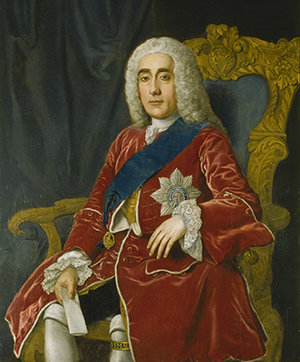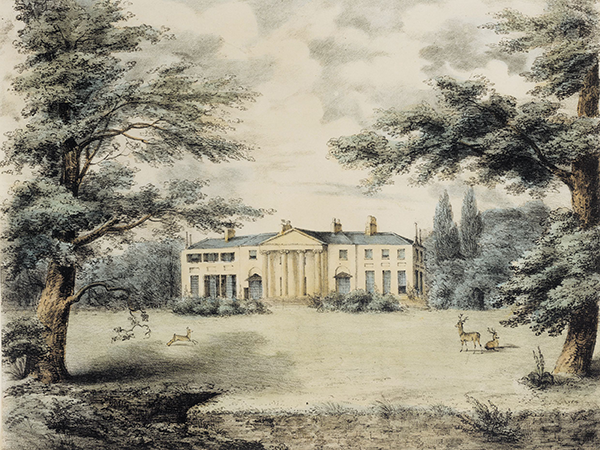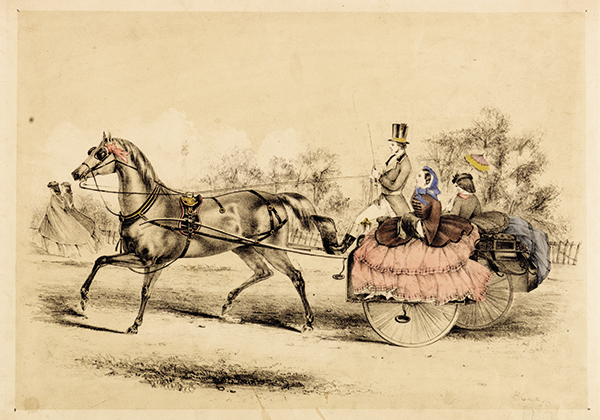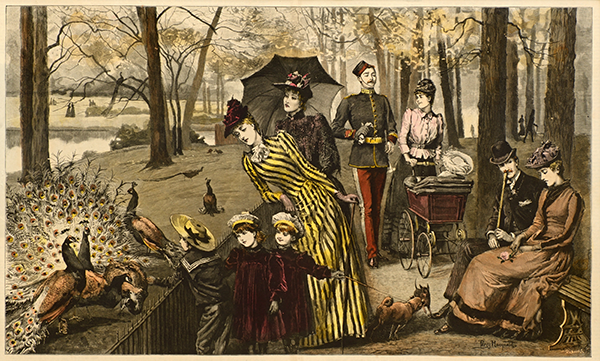Parks: our shared heritage
Published in Issue 3 (May/June 2017), Reviews, Volume 25The Gallery, Farmleigh House, Phoenix Park, Dublin 8
www.phoenixpark.ie
By Tony Canavan

Above: Lord Lieutenant Philip Dormer Stanhope, 4th earl of Chesterfield, opened the Phoenix Park to the public in 1745.
The exhibition ties in the history of Phoenix Park with that of London’s royal parks: Greenwich, Hyde, St James’s, Regent’s, Green, Richmond and Bushy. The park in Dublin is one of a network of royal parks that began in Henry VIII’s time—just one of the many facts that emerge from this interesting and informative exhibition. Using prints, maps, photographs, postcards and portraits, as well as screens and artefacts, the exhibition explains how these essentially private tracts of land evolved into the public parks we know today. It is divided into five themes: formation and development, celebration and commemoration, military and war years, people at play, and park management.
With over 200 items on display there is much to see, and the areas of interest range from military manoeuvres to motor racing. It is surprising just how diverse were the uses to which the parks were put. Most contained military barracks, and there are maps, sketches and even a satirical cartoon of these events in Phoenix Park. The military aspects were more important in the London parks, which went through two world wars. Look out for the photograph of Second World War American soldiers wading waist-high, guns held above their heads, in the Serpentine River in Hyde Park as part of their training for D-Day.

Above: Nineteenth-century print of the Viceregal Lodge, which in 1937 became Áras an Uachtaráin, official residence of the president of Ireland.
Touching on the military is the career of Arthur Wellesley, duke of Wellington, whose portrait is also on display here. His career began in Phoenix Park, and when he eventually retired decades later in 1850 he was appointed chief ranger and keeper of Hyde Park and St James’s Park. One aspect of the exhibition is to remind English people that Wellington was in fact Irish (stables and horses notwithstanding). Another famous person with a forgotten association with Phoenix Park is Winston Churchill, who spent his childhood in the Viceregal Lodge when his father, Randolph, was private secretary to the viceroy. There are photographs of an instantly recognisable chubby child. Ordinary people are represented in the many postcards from the nineteenth and twentieth centuries on display. On the front are scenes from the various parks over the years, all of which are of interest in their own right, but on the reverse many have messages from the people who posted them, giving an insight into their lives.
Fashion features indirectly in the photographs illustrating ‘people at play’. Crinolines and top hats give way to more practical attire as the twentieth century approaches, while the pastimes in the parks change too. While cricket and even polo continued to be played, the parks evolved from places where the fashionable élite went to be seen to people’s parks where families picnicked, played games or simply relaxed on the grass. There is a memorable photograph of two women, with hats made out of folded newspaper, enjoying the sun in a London park while behind them anti-aircraft blimps float in the air, a reminder that London was being subjected to Hitler’s blitz.

Above: ‘CRINOLINE IN DUBLIN’—fashion features indirectly in the photographs illustrating ‘people at play’.
Phoenix Park has its own reminder of the Second World War—a small piece of shrapnel believed to be a piece of the bomb that dropped there in 1941. This comes with a report from the Garda forensic lab on its authenticity. Among other artefacts, look out for a gold pen presented to head gardener Wilkie by Queen Victoria on the occasion of her planting a tree in the grounds of the Viceregal Lodge in 1862. Remarkably, this pen remained in the family, eventually ending up with a great-great-nephew in Canada, where it was tracked down for the exhibition. Another artefact worth looking out for is a silver scale model of the Phoenix Column. Exact in every detail, this was awarded as a trophy in the motor races that were a regular feature in Phoenix Park in the early twentieth century.

Above: An 1891 postcard, ‘FEEDING THE PEACOCKS IN KENSINGTON GARDENS’. Many of those on display have messages on the reverse side from the people who posted them.
The exhibition carries the story of the parks up to the present day. While shared history is the theme, Phoenix Park’s history diverged in 1922. It came under the auspices of the Irish Free State, and the Office of Public Works administers it to this day. In 1937 the Viceregal Lodge became Áras an Uachtaráin, official residence of the president. Perhaps the most surprising exhibits are the organic produce, apple juice and honey, that come from the Áras garden and which are given to official guests.
This exhibition runs in Dublin from 7 April to 28 May, and then in the Mall Galleries, The Mall, London, from 27 July to 11 August 2017.
Tony Canavan is editor of Books Ireland.
















